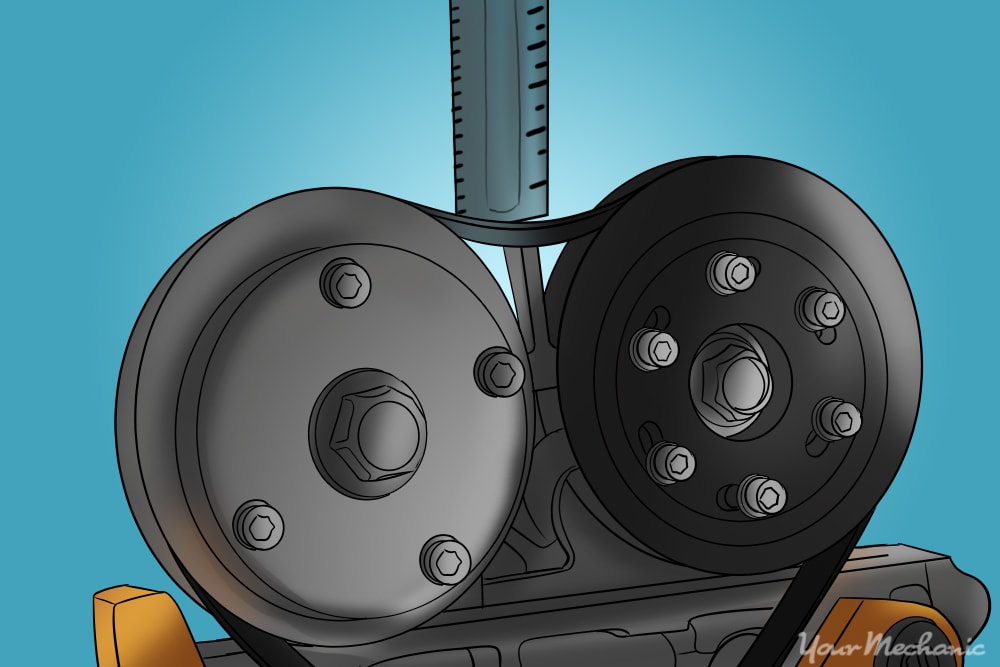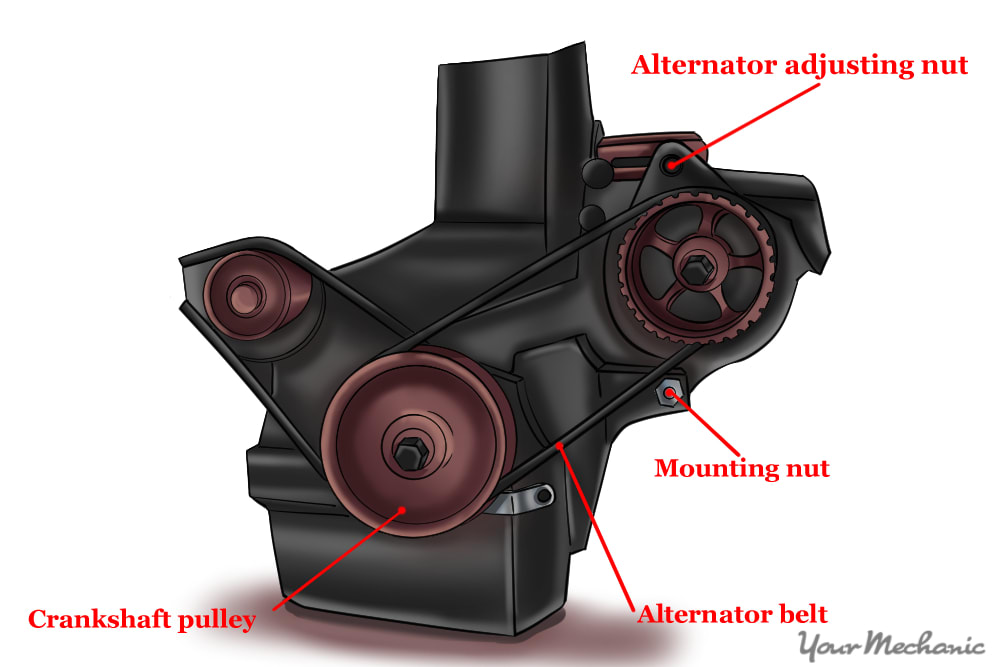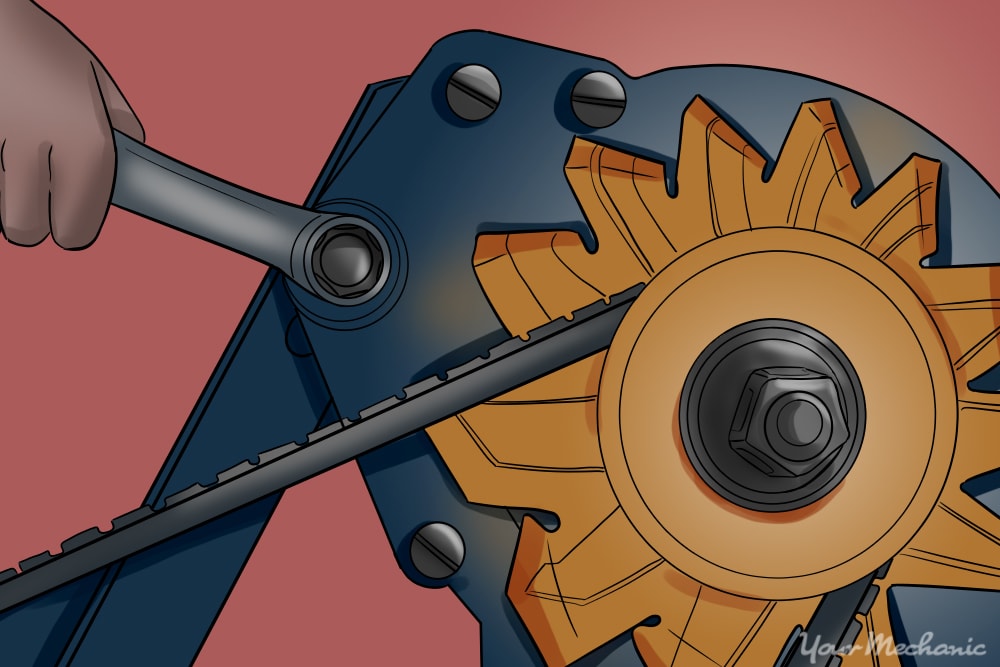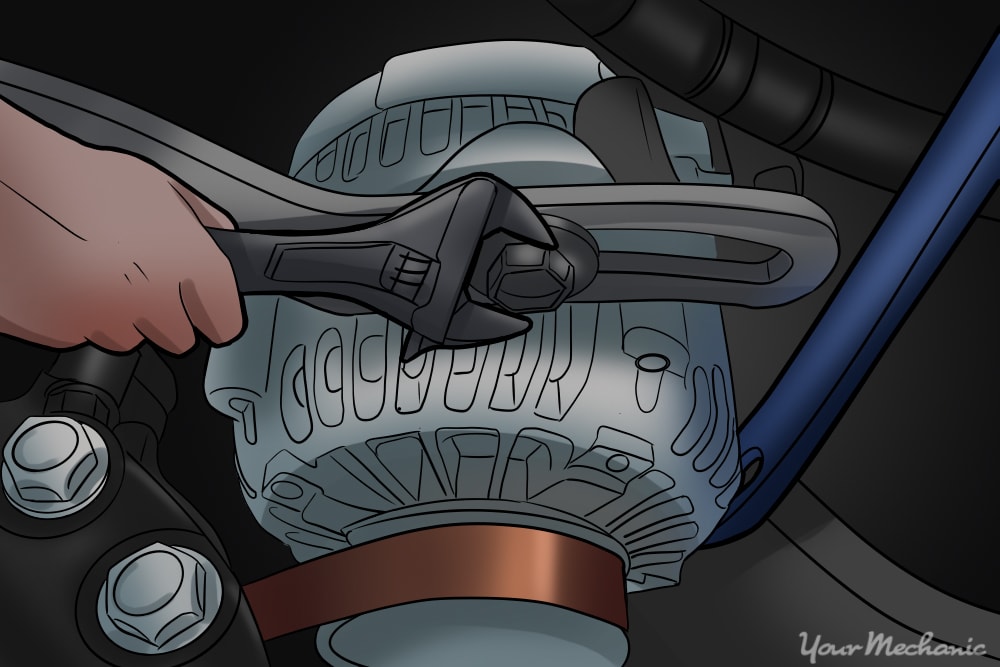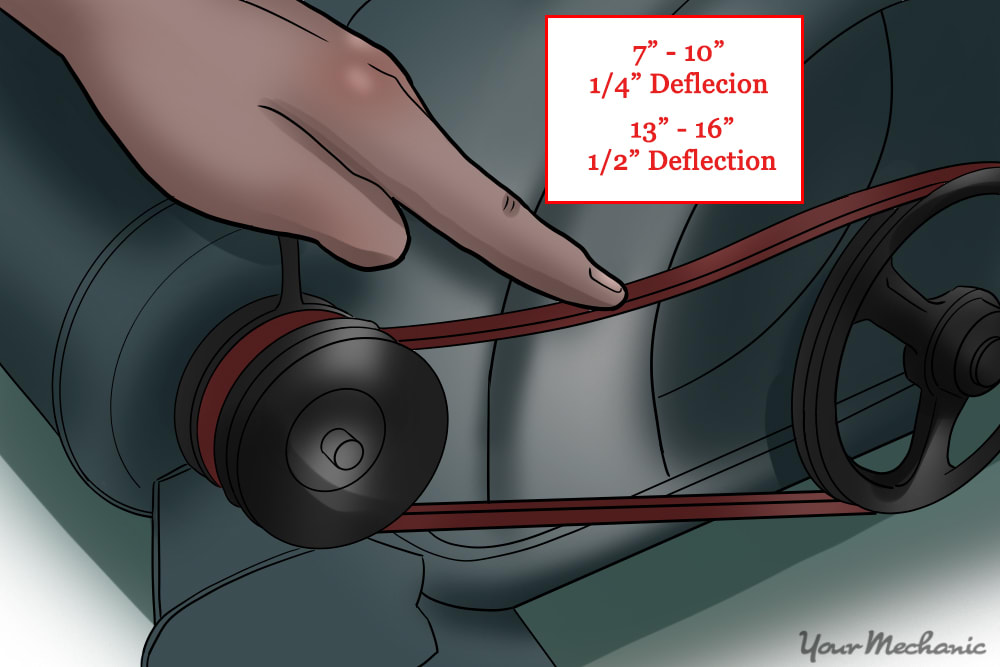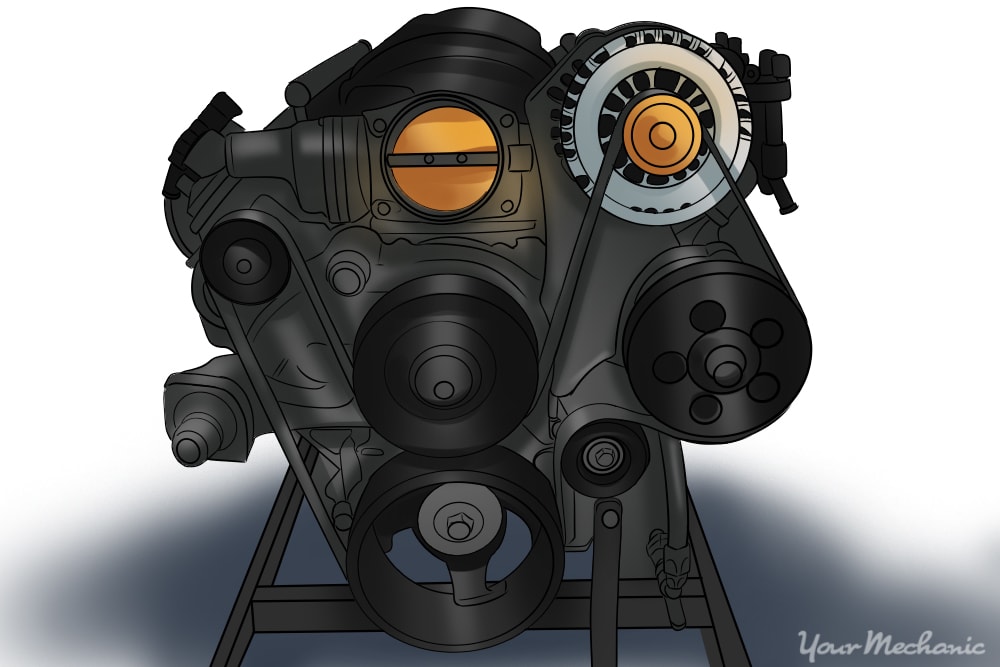

If you have just replaced your drive belt and you are noticing high-pitched squeaking or squealing under the hood, or if you’ve noticed that your drive belt doesn’t seem to be fitting well against the pulleys, your drive belt may be loose. This article will cover how to tighten your drive belt to stop that annoying squeaking or squealing noise.
- Note: The cars with belts that need manual tightening generally have multiple belts such as a AC belt and an alternator belt. Cars with a single serpentine belt that uses an automatic belt tensioner cannot have the drive belt tightened manually.
Part 1 of 3: Checking the belt
Materials
- Eye protection
- Gloves
- Large screwdriver or pry bar
- Ratchet and sockets
- Ruler
- Wrench Set
Step 1: Don your protective gear and locate the drive belt Put on your safety glasses and gloves.
Locate the drive belt - the vehicle may have more than one. Make sure you are working on the belt that needs to be tightened.
Step 2: Measure the belt deflection. Place the ruler along the longest stretch of belt on the vehicle, and push down on the belt.
While pushing down, measure how far down the belt goes. For most vehicles, the belt should not be able to be pressed down more than ½ inch. If it can be pressed lower, then the belt is too loose.
- Note: Manufacturers have their own specifications for how much deflection can be found in the belt. Make sure to check the owner's manual for your specific vehicle.
Also make sure the drive belt is in good condition before moving forward with tightening. Look for any cracks, wear, or oil on the belt. If damage is found, you will need to replace the drive belt.
- Tip: An alternate method of seeing whether the drive belt needs tightening is to rotate the belt. It should not be able to turn more than 90 degrees; if it can turn more, you know the belt should be tightened.
Part 2 of 3: Tightening the belt
Step 1: Locate the drive belt tensioner. The drive belt assembly will have a specific component that tightens that belt.
The tensioner may be found on the alternator or a pulley; it varies by vehicle and which belt is being tightened.
This article will use an alternator belt tensioner as an example.
The alternator will have one bolt that secures it in a fixed location and allows it to pivot. The other end of the alternator will be attached to a slotted slider which allows the alternator to change position to tighten or loosen the belt.
Step 2: Loosening the alternator bolts. Loosen the pivot bolt as well as the bolt that goes through the adjustment strap. This should relax the alternator and allow some movement
Step 3: Add tension to the drive belt. Insert the pry bar above the alternator pulley. Apply gentle pressure upwards so that it adds tension to the drive belt.
Once the drive belt is moved into its desired tension, tighten the adjustment bolt to lock the belt in place. Then, torque the adjustment bolt to the manufacturer’s specifications.
Once the adjustment bolt is tight, check the belt tension again. If the tension remains steady, continue to the next steps. If the tension has decreased, loosen the adjustment bolt and repeat Step 3.
Step 4:Tighten the pivot bolt in the other side of the alternator. Torque the bolt to manufacturer’s specifications.
Part 3 of 3: Final checks
Step 1: Check the belt tightness. With all the bolts secure, check the belt deflection at the longest point again.
It should be less than ½ inch if pushed downwards.
Step 2: Start the engine and listen for any abnormal sounds. Make sure no noise is heard from the drive belt.
- Note: The belt may have to be adjusted several times to achieve the proper level of tightness.
If you have difficulty with any of these steps, our certified mobile mechanics at YourMechanic will be happy to come out to your home or office to adjust your drive belt tension or perform any other drive belt service that you may need.


